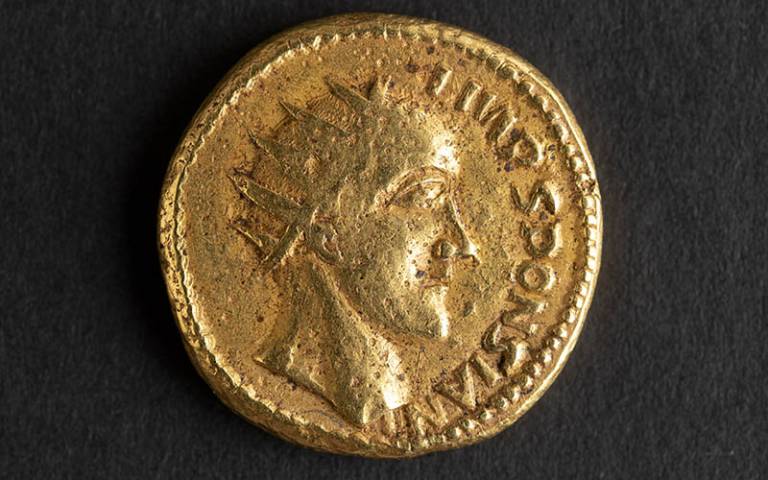Ancient Roman gold coins thought to be ‘fakes’ reveal long-lost emperor
‘Findings will mean the addition of another important historical figure in our history’

An ancient gold coin long dismissed as a forgery is authentic and depicts a long-lost Roman emperor, according to a new study.
The coin depicting the Roman emperor Sponsian was first unearthed in Transylvania, in present-day Romania, in 1713 along with a handful of other coins of the same design, said researchers, including those from University College London.
The coins have been regarded as “fakes” since the mid-19th century, due to their crude, strange design features and jumbled inscriptions.
In the new study, published in the journal PLOS ONE, researchers compared the Sponsion coin with other Roman coins known to be genuine.
The latest study is the first scientific analysis of these coins, said scientists, who analysed the surface of the coins using powerful microscopes.
They found evidence of wear and tear on the Sponsian coin, suggesting it had been in active circulation.
Minerals on the coin’s surface were also discovered – consistent with it being buried in soil over a long period of time.
Deposits on the coins also suggested they were buried for a prolonged period before being exhumed.
“Scientific analysis of these ultra-rare coins rescues the emperor Sponsian from obscurity,” study lead author Paul N Pearson said in a statement.
“Our evidence suggests he ruled Roman Dacia, an isolated gold mining outpost, at a time when the empire was beset by civil wars and the borderlands were overrun by plundering invaders,” Dr Pearson said.
After the Sponsian coins were first discovered in the early 18th century, they were thought to be genuine and classed alongside other imitations of Roman coins made beyond the fringes of the empire.
But attitudes changed from the mid-19th century and they were dismissed as fakes – until now.
Previous studies suggested the ancient Roman province of Dacia – a region overlapping modern-day Romania and known for its gold mines – was cut off from the rest of the Roman empire in around 260 CE.
Researchers suspect Sponsian may have been a local army officer forced to assume supreme command during a period of chaos and civil war.
He may have protected the military and civilian population of Dacia until order was restored, and the province evacuated between 271 and 275 CE.
With Sponsian likely unable to receive official coins from the mint in Rome, he may have authorised the creation of locally produced coins with some featuring his own face, the study suggests.
“Not only do we hope that this encourages further debate about Sponsian as a historical figure, but also the investigation of coins relating to him held in other museums across Europe,” Jesper Ericsson, Curator of Numismatics at The Hunterian at the University of Glasgow, said.
“If these results are accepted by the scientific community they will mean the addition of another important historical figure in our history,” Alexandru Constantin Chituță, the interim manager of the Brukenthal National Museum in Romania, said.






Join our commenting forum
Join thought-provoking conversations, follow other Independent readers and see their replies
Comments